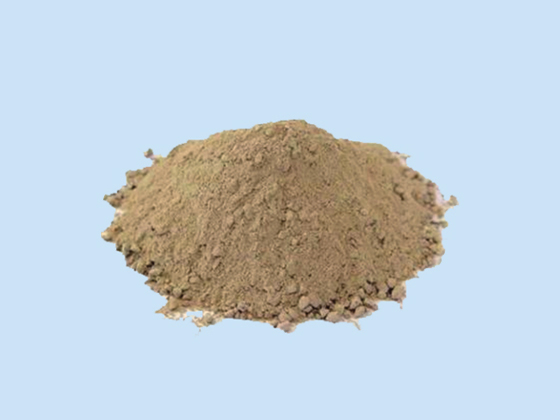
Liaoning Haicheng Xinyue Refractories Co., Ltd.
Mobile phone: +86-15041737767 +86-13322303666
Website:www.xinedai.xyz
Mailbox: xinyuenaihuo@163.com
Address: East Pai Lou Industrial Park, Pai Lou Town, Haicheng, Liaoning.
Dry vibrating material for tundish is an amorphous refractory formed by vibrating method without water or liquid binder. Under the action of vibration, the material can form a compact and uniform whole, and the strength is produced by thermosetting binder or ceramic sintering agent when heated. Dry vibrating material is made up of refractory aggregate, powder, sintering agent and additive. The material is easy to flow under the action of vibration force, in which the powder can fill the tiny pores between the particles even under the action of very small vibration force, and obtain a dense body with high filling density. In use, a layer of working face with certain strength is formed by heating, while part of the non-working face is still not sintered and presents original compact accumulation structure. This structure helps to reduce the stress due to expansion or contraction; helps to prevent the spread and extension of cracks; helps to prevent the intrusion of metal melts; and is easy to disassemble and clean up. This material is used in construction site by vibration method. The construction is simple and the construction period is short. It can directly and rapidly raise the temperature so that the working layer sintering can be put into use.
The intermediate dry vibrated material has double advantages of insulation board and coating. The advantages are as follows:

(1) The corrosion resistance of molten steel and slag is strong, the service life of working layer is greatly improved, and the refractory consumption per ton of steel can be reduced by pouring for a long time.
(2) Dry vibrating materials are gradually sintered from the working layer to the permanent layer by temperature gradient in the course of use, forming a dense structure on the hot surface of the working layer, and there will be no penetrating cracks which lead to slag infiltration into the permanent layer. Because the density of unsintered layer is low, it is beneficial for tundish insulation.
(3) micro shrinkage occurs during sintering, which is easy to turn and remove.
(4) Convenient construction, no water construction, can be quickly baked or no need to bake and directly use, increase the utilization rate of tundish, extend the use of the tundish cycle, thereby reducing the number of backup packages.
(5) Because the dry vibrating material has no water content, it can reduce the chances of secondary oxidation of molten steel in tundish, reduce the hydrogen absorption of molten steel, reduce the pollution to molten steel and improve the quality of billet.
(6) Compared with spraying and coating materials, the use of dry vibrating materials can reduce the energy consumption of baking, reduce labor intensity and improve labor productivity. Generally speaking, the coating needs to be baked at 800 ~ 1000 C for 2 ~ 6h, while the dry vibrating material only needs to be baked at 200 ~ 300 C for 45 ~ 90min to solidify the binder. The construction equipment is simple and the construction is convenient.
(7) The service life of dry vibrating materials is longer, generally up to 20 hours or more, and the higher ones up to 60-70 hours, which greatly improves the labor productivity of steelmaking process.
Construction of dry material for tundish
(1) The corrosion resistance of molten steel and slag is strong, the service life of working layer is greatly improved, and the refractory consumption per ton of steel can be reduced by pouring for a long time.
(2) Dry vibrating materials are gradually sintered from the working layer to the permanent layer by temperature gradient in the course of use, forming a dense structure on the hot surface of the working layer, and there will be no penetrating cracks which lead to slag infiltration into the permanent layer. Because the density of unsintered layer is low, it is beneficial for tundish insulation.
(3) micro shrinkage occurs during sintering, which is easy to turn and remove.
(4) Convenient construction, no water construction, can be quickly baked or no need to bake and directly use, increase the utilization rate of tundish, extend the use of the tundish cycle, thereby reducing the number of backup packages.
(5) Because the dry vibrating material has no water content, it can reduce the chances of secondary oxidation of molten steel in tundish, reduce the hydrogen absorption of molten steel, reduce the pollution to molten steel and improve the quality of billet.
(6) Compared with spraying and coating materials, the use of dry vibrating materials can reduce the energy consumption of baking, reduce labor intensity and improve labor productivity. Generally speaking, the coating needs to be baked at 800 ~ 1000 C for 2 ~ 6h, while the dry vibrating material only needs to be baked at 200 ~ 300 C for 45 ~ 90min to solidify the binder. The construction equipment is simple and the construction is convenient.
(7) The service life of dry vibrating materials is longer, generally up to 20 hours or more, and the higher ones up to 60-70 hours, which greatly improves the labor productivity of steelmaking process.
Construction of dry material for tundish
